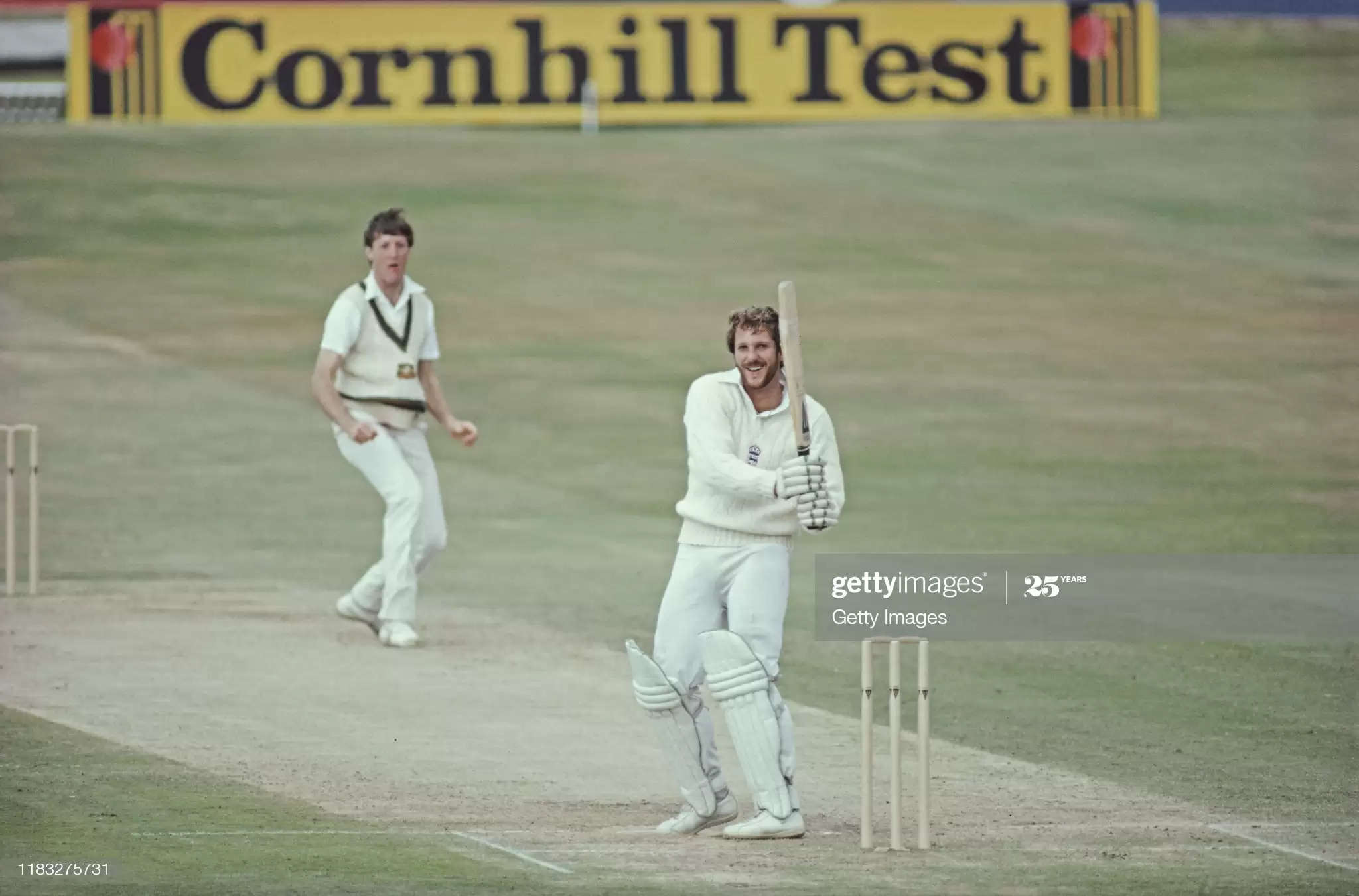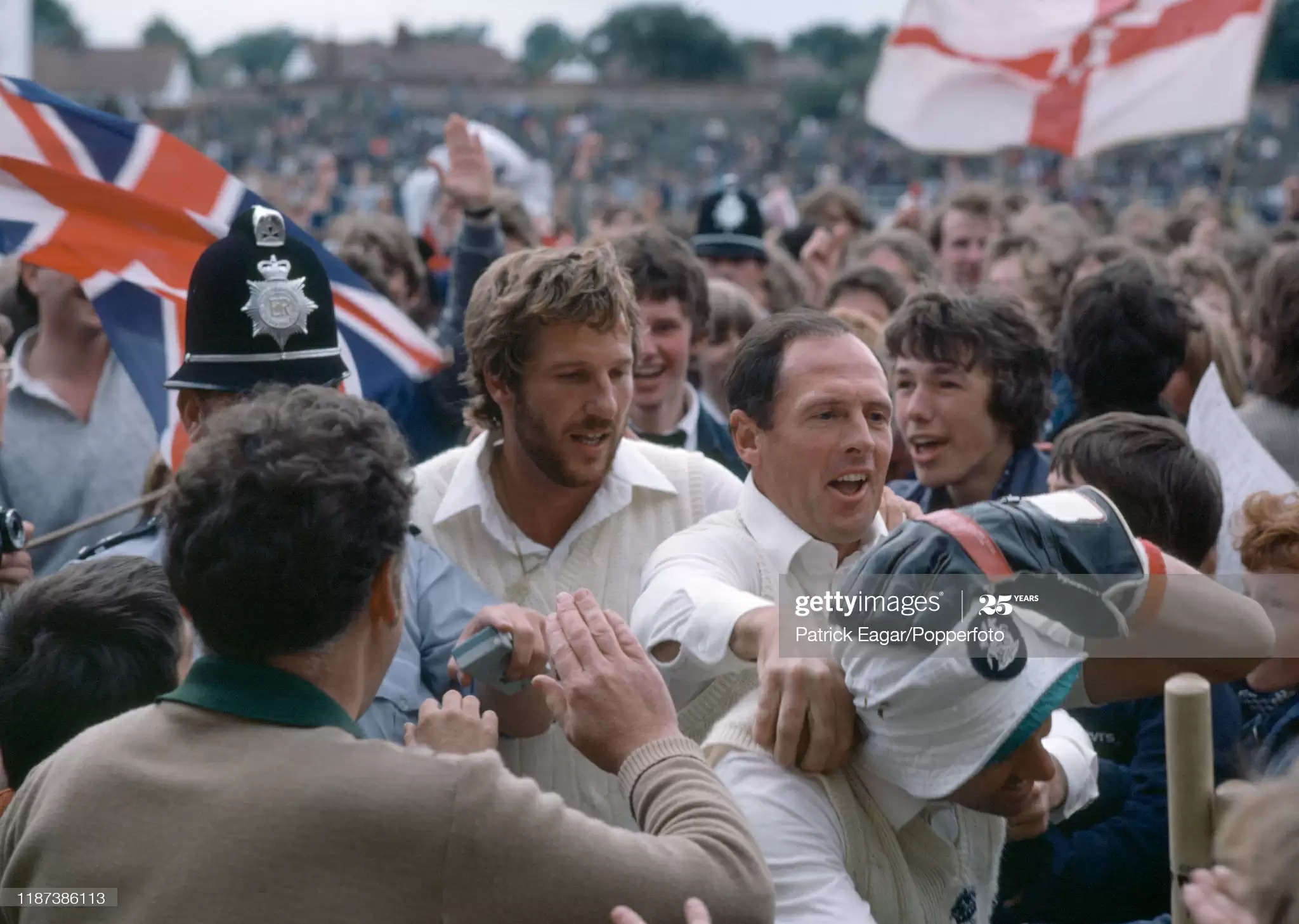Ian Botham, Bob Willis and the heroics of the 1981 Headingley Test

There was an eerie silence at Lord’s. England captain Ian Botham put his head down and walked back to the dressing room after another duck in the second Ashes Test against Australia. The silence was not at his dismissal, but the bad patch clinging by him. The Marylebone Cricket Club members did not acknowledge his return.

Ian Botham returns to the pavilion after his second duck of the match during the 2nd Ashes Test match.
Under Botham, England without any win, had lost eight out of 12 matches. It affected him as a player too as the numbers show: his batting average from 40.48 dipped to 14.23, while his bowling average from 18.52 went up to 34.79.

The Australians, after landing on the English shores, won the first Test at Trent Bridge, whereas the home team just about managed to draw the second one at Lord’s. Australia were 1-0 up.
Botham decided to step down from the role. Mike Brearley was made captain.
There was doubt whether England’s premium fast bowler, Bob Willis would play the third Test, but he was included for what was going to be a miracle Test.
There have been Test matches that are part of folklore, which get etched in everyone’s mind, which rejuvenates the team’s morale, which binds the society. The Headingley Test for was going to be the one for England.
It is a story of an unbelievable turnaround, which, not a single soul, would have imagined. Not even the players.
The toss went Australia’s way. They opted to bat and got off to a great start until, at 55, Graeme Wood was trapped lbw with an inswinger by Botham. His opening partner, at the other end, John Dyson kept piling runs. Trevor Chappell was dropped twice, first in the slips by David Gower, then by Botham. After a sedate 27, Chappell was caught behind. Dyson made a fine 100 which included 14 fours. Skipper Kim Hughes and Ray Bright were unbeaten at close of play, with 203/3 on board.
The following day, Hughes and Graham Yallop made half-centuries. The former was dropped by Graham Gooch. England bowlers, except Botham – who scalped six wickets – were not up to the mark on day two, as Australia declared at 401/9. England openers played out the last two overs.
England wining the Test would have been insane thinking at this point.
On day three, by Tea, England were all out for 174, of which 50 runs were made by Botham. While Dennis Lillee bagged four wickets, Terry Alderman and Jeff Lawson took three wickets each. England was made to follow on. They were 227 runs behind.
England winning this Test would have assured you a bed at an asylum at this point?
On day 4 when Willey was caught at short third man off Lillee by Dyson, the PA system announced that the fast bowler had made the record of most number of wickets (142) in Ashes. The crowd cheered. Botham joined them by clapping with a bat in hand and made it to the middle. Little did he know that he would leave the field to a standing ovation.
He saw Geoffrey Boycott, after his defensive 46 in 215 minutes, fall to Terry Alderman. He then saw Bob Taylor returning to the shed. England were 135/7. Australia needed three wickets to win.
The crowd were leaving the ground. The commentators talked about the centurion Dyson winning the man of the match award, which would be presented by Fred Trueman.
England certainly was not saving this Test, let alone winning it.
Botham, unlike the first two Tests, appeared relieved and carefree with the bat, for the burden of captaincy was off his shoulders. He began slowly, but then took risks by swinging his bat. The edges off his blade did only good to him. They yielded runs.
Off the strike, Botham would rest his hand on his hips, stand crossed legged, putting weight on his Duncan Farnley bat. Just when the bowler was to bowl, he would take a step or two out of the crease, then again, would come back in the same position as Graham Dilley made quick runs without wasting any time. The left-hander, with his minimum footwork, began hitting the balls for fours through the off-side, one after the other. He bettered his record and made a 50.
Shortly, Botham with a four to the deep mid-wicket region brought his second fifty of the match in 57 balls. He had a grin on his face.

England batsman Ian Botham smiles as he hits out off the bowling of Geoff Lawson during his 149*
The pair scored 50-runs in between them in 39 minutes. And in the next 31 minutes, they added another 50. The score of 227 was surpassed, which meant Australia had to bat again. From the balcony, Brearley signalled the pair to continue the same way. Soon Botham advanced to Alderman and hit a six over long-on. Richie Benaud, on-air, said: “No need to look for that one, it’s gone straight into the confectionery stall and out again.”
Dilley was bowled by Alderman for 56. Chris Old joined Botham and gave superb support. During their 67 partnership, Botham hit his seventh Test 100, in 87 balls. Botham belted the ball repeatedly. And gave hope. Yes, Australia was still ahead in the game. After Old was gone for 29, Willis scored 31 with Botham before the close of day 4. England was 351/9 (Botham 145*, Willis 1*). On the final day, only 5 runs were added.
Though the all-rounder’s knock included a few classic textbook shots, it was mainly, an exhibition of great unorthodox batting, which, the students of the game then, were not encouraged to emulate. He hit 27 fours, 1 six for making 149 in 148 balls with an impressive strike rate of 100.
The taboilds which said ‘Ian Botham Must Go’, were now in bold and capital saying: ‘WHAT A GUY!’
Australia needed 130 runs to win.
The crowd kept swelling. There was a sense that anything could happen.
For the first time, a thought, even if remote, suggested England could win this Test?
Australia was cruising for victory and were 56-1. The run flow stopped when Willis started bowling from the Kirkstall Lane End. He would quickly go back to his bowling mark to bowl again, to take wickets. As if, he had a deadline to meet.
He produced one of the greatest fast bowling spells as he ripped apart the batting line up. The tourist slumped to 75-8.
And when the fast bowler bagged both the tail-enders, registering his best figures: 15.1 Overs, 3 Maidens, 43 Runs, 8 Wickets, England had won the match by 18 runs; it was only the second time that a team following-on had won in Test cricket history.

England cricketers Ian Botham, Geoffrey Boycott and wicketkeeper Bob Taylor make their way through the crowd after England win the 3rd Test match between England and Australia by 18 runs at Headingley, Leeds, 21st July 1981. (Photo by Patrick Eagar/Popperfoto via Getty Images)
Bob Willis and Ian Botham and others ran towards the pavilion, as the jubilant crowd invaded. Shortly, on the balcony, when Botham was declared the Man-of the Match award, there was euphoria at Headingley. Now, for many, it was hard to believe that England had won! They had, and how!

England cricket captain Ian Botham is interviewed after his historic performance in the third test match against Australia at Headingley, 16th-21st July 1981. Botham hit an innings of 149 not out and took seven Australian wickets, to help England win by18 runs. (Photo by Adrian Murrell/Getty Images)

